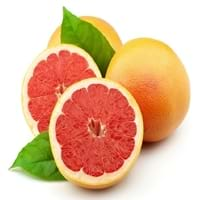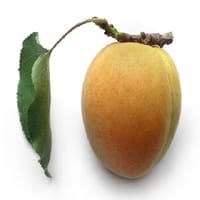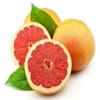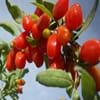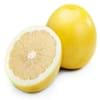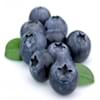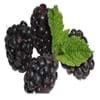Health Benefits
Arthritis prevention, Asthma treatment, Cancer prevention, Kidney stone treatment, Liver health
Asthma treatment, Cancer prevention, Controls blood pressure, Digestive aid, Heart care, Maintains hormonal balance, Regulation of heart rate, Skin cleansing, Skin rejuvenation
General Benefits
Anti oxidant properties, Boosts immune system, Cures cough, Eye care, Fights against infections, Helps in weight loss, Improves eye vision, Maintains healthy cholesterol level, Treatment of common cold
Boosts immune system, Controls blood pressure, Digestive aid, Eye care, Maintains healthy cholesterol level, Strengthens bones
Skin Benefits
Anti-aging benefits, Brightens and lightens complexion, Reduces wrinkles, Treatment of dark spots
Hydrates skin, Reduces wrinkles, Treatment of dark spots, Treatment of skin diseases
Hair Benefits
Prevents hair loss, Protects hair, Regulates hair growth, Treatment of dandruff
Good conditioner, Regulates hair growth, Rejuvenates scalp, Softening mask, Treatment of dandruff
Allergy Symptoms
Abdominal pains, Decrease in blood pressure, Diarrhea, Dizziness, Eczema, Hives, Lightheadedness, Nausea, Runny nose, Swelling of mouth, tongue or lips, Vomiting
Abdominal cramps, Anaphylaxis, Breathing difficulty, Diarrhea, Itching of mouth, Itching sensation in throat, Swelling of mouth, tongue or lips, Vomiting, Wheezing
Side Effects
Allergic reaction
Dizziness, Headache, Nausea, Vomiting
Best Time to Eat
As a snack in the late afternoon, Don't consume at night and before bed, Don't eat after meal, Morning time (before lunch), Strictly avoid empty stomach
Best if taken as a breakfast (or empty stomach), As a snack in the late afternoon, Don't consume at night and before bed, Eat the fresh ones, avoid mixing with any other foods, don't eat after meal.
Vitamin B5 (Pantothenic Acid)
Vitamin C (Ascorbic Acid)
Vitamin K (Phyllochinone)
Calories in Fresh Fruit with Peel
-
Calories in Fresh Fruit without Peel
-
Calories in Frozen Form
-
-
Calories in Canned Form
-
Type
Citrus, Tree fruit
Tree fruit
Season
All seasons
Summer
Varieties
Rio Star, Flame, Thompson and Star Ruby
Gold Cot, Tilton, Wenatchee, Goldbar, Gold Kist, Tomcot, Harcot, Brittany Gold, Harglow, Hunza, Moorpark, Patterson and Royal Rosa
Color
Pink, Red
Orange, Yellowish-orange
Taste
Sweet, Tangy
Smooth, Sweet
Soil Type
Loam, Well-drained
Well-drained
Climatic Conditions
Humid, Warm
Dry, Hot
Facts about
- Grapefruit is used to protect wooden tools due to its anti-fungal properties.
- It grows in clusters as grapes & hence called as grapefruit.
- This fruit tastes delicious when paired with fish, e.g. in fish salads.
- 9 Jan is considered as the National Apricot Day.
- Apricots have been around for more than 4000 yrs.
- In latin, the meaning of apricot is 'precious'.
- 95% of apricots in the US are produced by California.
Top Producer
China
Turkey
Other Countries
Argentina, India, Israel, Mexico, South Africa, Sudan, Thailand, Turkey, United States of America
Algeria, Egypt, France, Iran, Italy, Morocco, Pakistan, Spain, Uzbekistan
Top Importer
Japan
United States of America
Top Exporter
United States of America
France
Botanical Name
Citrus paradisi
Prunus armeniaca
Subkingdom
Tracheobionta
Tracheobionta
Division
Magnoliophyta
Magnoliophyta
Class
Magnoliopsida
Magnoliopsida
Species
C. × paradisi
P. armeniaca
Generic Group
Citrus fruit
Rose
Difference Between Pink Grapefruit and Apricot
We might think that Pink Grapefruit and Apricot are similar with respect to nutritional value and health benefits. But the nutrient content of both fruits is different. Pink Grapefruit and Apricot Facts such as their taste, shape, color, and size are also distinct. The difference between Pink Grapefruit and Apricot is explained here.
The amount of calories in 100 gm of fresh Pink Grapefruit and Apricot with peel is - and 48.00 kcal and the amount of calories without peel is 42.00 kcal and - respectively. Thus, Pink Grapefruit and Apricot belong to Low Calorie Fruits and Low Calorie Fruits category.These fruits might or might not differ with respect to their scientific classification. The order of Pink Grapefruit and Apricot is Sapindales and Rosales respectively. Pink Grapefruit belongs to Rutaceae family and Apricot belongs to Rosaceae family. Pink Grapefruit belongs to Citrus genus of C. × paradisi species and Apricot belongs to Prunus genus of P. armeniaca species. Beings plants, both fruits belong to Plantae Kingdom.
